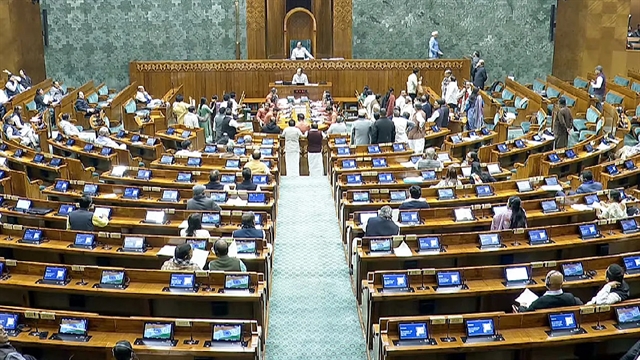 Economy
Economy


|
| A woman shops for Tết decorations on Hàng Mã Street, Hà Nội. Việt Nam’s economic growth might reach 6.48 per cent in 2024, driven by innovation, economic restructuring and institutional reforms. — VNA/VNS Photo Hoàng Hiếu |
HÀ NỘI — Việt Nam’s economic growth might reach 6.48 per cent in 2024, driven by innovation, economic restructuring and institutional reforms, according to a report published by the Central Institute for Economic Management (CIEM) at a conference on Monday.
Specifically, CIEM raised two scenarios for GDP growth.
In the first scenario in which the global economy recovers slowly at 2.9 per cent and inflation remains at high level, Việt Nam’s GDP would expand at 6.13 per cent, inflation at 3.94 per cent, export at 4.02 per cent and trade surplus at US$5.64 billion.
In the second scenario in which the global GDP growth is projected at 3.2 per cent, the Vietnamese economy would expand at 6.48 per cent, inflation at 3.72 per cent, export at 5.19 per cent and trade surplus at 6.26 per cent.
CIEM’s Director Trần Thị Hồng Minh, said that 2024 is predicted to remain a difficult year for both the Vietnamese and global economy.
However, strengthening institutional reforms would help Việt Nam to accelerate growth, she stressed.
Việt Nam not only relies on fiscal and monetary solutions to promote economic growth, but also creates new growth drivers from innovation, new economic models, business environment reform, economic restructuring and improving regional planning and linkage.
Problems such as difficulties in capital absorption have been frankly addressed.
To achieve the best GDP growth, CIEM said that Việt Nam must be more drastic with economic institutional reform to accelerate growth.
“Việt Nam must concretise policy solutions to promote innovations coupled with improving labour productivity and simplifying administrative procedures. Diversifying export and import markets through taking advantage of free trade agreements (FTAs) is of critical importance,” said Nguyễn Ánh Dương, head of CIEM’s General Research Department.
Digital transformation and green transition should remain priorities of Việt Nam.
Unlike previous years, Việt Nam now has a better policy framework. However, it is necessary to have an appropriate forum for new business models which aim to take the lead in digital transformation and green transition.
Policies should focus on accelerating economic recovery on the basis of firm macroeconomic foundation and a more innovation – friendly economic institutional reform associated with risk handling in a volatile international economic environment, CIEM’s report wrote.
“In the new development context, we believe that institutions are a resource, even the key to Việt Nam’s growth,” the report stressed.
The report suggested efforts be hastened to enable enterprises to take advantage of the Regional Comprehensive Economic Partnership (RCEP), adding that the percentage of Việt Nam’s trade with RCEP member countries remained low. Few enterprises could take advantage of the RCEP’s incentives, at 0.67 per cent.
Vietnamese economy expanded at 5.05 per cent in 2023, 1.45 percentage points below the target of 6.5 per cent.
Despite the failure to meet 2023 GDP growth target, the Vietnamese economy saw positive improvement quarter-on-quarter, Dương said.
CPI rose 3.25 per cent, within the target. FDI is a spotlight, rising by more than 32 per cent to reach $36.6 billion. — VNS



.jpg)
